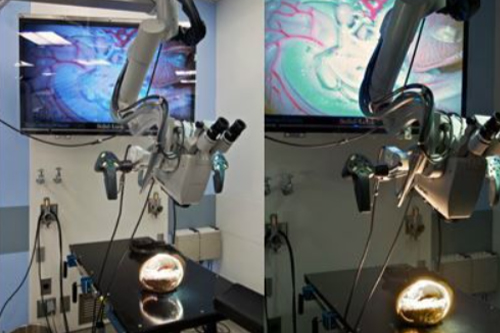
Neurosurgical innovations
Over the past few decades, neurosurgical innovations have significantly transformed the field of brain and spine surgery. With the rapid advancement of medical technology, new surgical techniques and cutting-edge tools have greatly improved patient outcomes. Furthermore, these breakthroughs have enhanced precision, reduced recovery time, and minimized risks. Consequently, the integration of robotics, artificial intelligence, and minimally invasive procedures has revolutionized neurosurgery, offering hope to patients with complex neurological disorders.
Why Are Neurosurgical Innovations Important?
Cutting-Edge Technologies in Neurosurgery
1. Minimally Invasive Neurosurgery (MIS)
Minimally invasive neurosurgery has gained widespread adoption due to its numerous benefits. In contrast to traditional open surgery, MIS involves smaller incisions, which results in reduced blood loss, minimal tissue damage, and quicker recovery. Additionally, procedures like endoscopic brain surgery and keyhole craniotomy have improved patient safety and comfort.
2. Robotic-Assisted Neurosurgery
Another groundbreaking innovation is robotic-assisted neurosurgery, which has enhanced precision and accuracy in complex procedures. Moreover, robotic systems such as the ROSA™ and the Mazor X™ have revolutionized spinal and brain surgeries by allowing surgeons to perform highly delicate operations with greater control. Furthermore, these systems assist in reducing human error, ensuring better surgical outcomes.
3. Intraoperative Imaging and Navigation Systems
Advanced imaging techniques, including intraoperative MRI and CT scans, provide real-time visualization during surgery. Consequently, surgeons can navigate complex brain structures with greater accuracy. Moreover, neuronavigation systems allow for pinpoint precision in tumor resections and deep brain stimulation (DBS) procedures. As a result, these technologies have improved surgical success rates and minimized postoperative complications.
4. 3D Printing in Neurosurgery
5. Artificial Intelligence and Machine Learning in Neurosurgery
6. Gene Therapy and Regenerative Medicine
Benefits of Neurosurgical Innovations
- Enhanced Precision: Robotic systems and AI-powered tools enable surgeons to operate with greater accuracy.
- Reduced Recovery Time: Minimally invasive techniques minimize trauma to surrounding tissues, allowing patients to recover faster.
- Lower Risk of Complications: Real-time imaging and navigation systems help surgeons avoid critical structures, reducing surgical risks.
- Customized Treatment Approaches: Personalized 3D-printed implants and regenerative therapies provide tailored solutions for patients.
- Improved Quality of Life: Innovative neurosurgical techniques offer better long-term outcomes, helping patients regain functionality and independence.
Challenges in Implementing Neurosurgical Innovations
Despite the numerous advantages, there are still challenges in adopting neurosurgical innovations. Some of the main obstacles include:
- High Costs: Advanced surgical technologies and robotic systems require significant financial investment, making them inaccessible in some regions.
- Training and Expertise: Surgeons need specialized training to operate cutting-edge equipment effectively.
- Regulatory Approvals: Many emerging neurosurgical technologies must undergo rigorous testing and approval processes before they can be widely used.
- Ethical Considerations: AI-driven decision-making and genetic modifications raise ethical concerns that require careful evaluation.
The Future of Neurosurgical Innovations
Looking ahead, the future of neurosurgery appears to be incredibly promising. With continuous research and technological advancements, we can expect even more breakthroughs in the following areas:
- Nanotechnology: The development of nanoscale devices may allow for targeted drug delivery and precise neural repairs.
- Brain-Computer Interfaces (BCIs): These systems hold the potential to restore mobility and communication abilities in patients with severe neurological conditions.
- Augmented Reality (AR) in Surgery: AR-assisted neurosurgery will provide surgeons with real-time, 3D visualization of brain structures, improving surgical accuracy.
- Advancements in Neuroprosthetics: The integration of AI-powered prosthetics and neural implants will enhance the lives of individuals with paralysis and limb loss.Contact Us
Conclusion
In summary, neurosurgical innovations are revolutionizing the field of brain and spine surgery, providing safer, more efficient, and highly precise treatment options. Moreover, the integration of robotics, AI, minimally invasive techniques, and regenerative medicine is significantly improving patient outcomes. While challenges such as high costs and ethical concerns remain, ongoing research and technological advancements continue to push the boundaries of what is possible. Therefore, staying informed about these groundbreaking developments is essential for both medical professionals and patients seeking the best neurosurgical care available today.Schedule your Consultation with Dr. Ritesh Nawkhare
